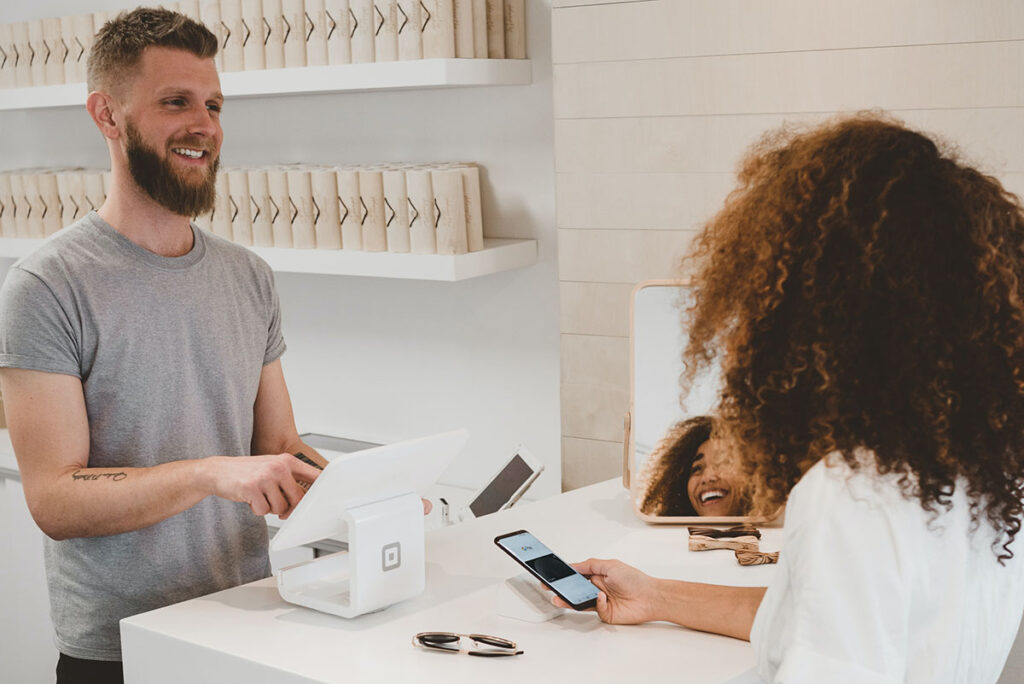6 Customer Engagement Strategies For Small Businesses
Whatever the size of a company, customer engagement is crucial. After all, it’s not enough to market your business and expect an influx of sales. Learn here how customer engagement strategies can change your business.
You should consider how people experience your business throughout the customer journey. This will start you down the road of securing more positive customer interactions – ones that will result in long-term business.
Enter customer engagement. This is the way your business interacts with a customer to foster a relationship, encourage loyalty, and improve your brand image.
It’s essential for all companies. But smaller businesses can particularly benefit, as margins are usually tighter, and each customer counts that much more.
So how can you engage customers and ensure they have a positive experience with your brand? Let’s look at some of the best customer engagement strategies you can implement.
1. Stay focused
Every business decision should focus on the customer experience, whether you’re thinking about investing in new kit for your call center agents or want to change your domains name.
Customers are pretty good at detecting authentic emotional connections and discerning when a change has been made that doesn’t prioritize their needs.
Take bank branch closures. Messaging often assures clients that banks are closing brick-and-mortar branches in response to customer preferences. However, customers believe it’s a decision driven by shareholder profits.
Small businesses have an advantage here. A more streamlined organizational structure means that most staff members will be close to the field of customer relations. This proximity also means they have a better chance of retaining an accurate picture of their customers, so they can more effectively factor them into decisions.
2. Personal is profitable
Personalized experiences are everywhere now that technology makes them more possible. By personalization, we mean tailoring interactions to individual customers.
This can mean sending customized sales messages based on a customer’s purchase history. It could be an email reminding a customer of a pending purchase or a customer loyalty program offering rewards for purchase activity.
You may think customers will balk at using personal data to develop a relationship and secure sales. Interestingly, however, people generally value being treated as an individual rather than a number. It doesn’t matter if it’s an algorithm that’s treating them as an individual. Consumers are happy with automation if it results in focused offers that interest them.

This is a crucial method of ensuring customer retention. The more a company seems to know the consumer, the more likely the relationship will thrive.
3. Take an omni-channel approach
It’s tempting to think that the email campaign you’ve just spent time and money on will do the trick in engaging every customer. After all, you worked hard enough on it – and everyone reads emails, right?
However, there are a host of different communication methods. Using only one or two channels severely limits your business’s reach.
First, consider what means of communication are more likely to feature highly in customer’s expectations. To do this, conduct research, gather feedback, or resort to old-fashioned generalization (just keep in mind this is a less robust method). For example, if your customers are primarily Gen-Z, then you could assume this audience segment is on TikTok.
On top of this, it would help to spread your net a little wider. By conducting a campaign over various channels, you can target a wider demographic. Engaging with potential and existing customers on the channels they value most also allows you to make your brand more accessible and relatable.
You also get repeated hit value if a TikTok user encounters the same message on Facebook or even Out of Home advertising (think billboards and bus shelters). This type of omnichannel marketing is highly beneficial.
Think about this whenever you do any e-commerce website development, too, as providing easy solutions along each stage of the journey is an excellent way of improving customer satisfaction.
An omni-channel approach has the effect of keeping the message current and gives it another chance to have an impact. This way, potential customers can become loyal ones.
4. Measure your results
Whichever communication channels you use, take time to determine the effect of your engagement efforts by monitoring customer engagement metrics.
You can do this by employing customer surveys to discern data such as net promoter scores. It’s important to get an accurate picture of customer satisfaction so you can secure greater numbers of engaged customers.
5. Check-in
Customer engagement is just that: keeping a customer engaged. So if an existing customer goes quiet, it’s worth checking in on them. Is there anything your business can do to give them a lift? Can you provide advice on an existing product or an incentive to purchase a new service?
Again, the more you can do to treat the disengaged customer as an individual with their own needs, the more satisfied they will be—and that automatically leads to better engagement.
6. Collect feedback and conduct reviews
Encourage customer feedback wherever you can; it’s the best way to learn. It shows that you listen to and value the input of your customers. Moreover, many customers won’t proceed with a purchase unless they’ve read genuine opinions from previous buyers.
With that in mind, implement feedback opportunities in multiple places: via your email cycle, on your website, and in social media posts.
You can even ask customers to provide verbal feedback directly to your call center team. Consider implementing solutions like the Dialpad IVR customer engagement system, which interacts with customers, directs them to the right department, and lets you monitor real-time metrics so you can improve the customer experience.
Keep in mind that customers aren’t likely to write a review without a bit of incentive. So consider offering giveaways, deals, and discounts to spur them on.
Engagement is organic
Engagement is all about the individual, but it’s also all about changing trends.
People change, products change, and businesses change. It’s up to you to respond to that by keeping your engagement efforts fresh. In other words, just because you’re smashing it with your current customers using one engagement technique, it doesn’t follow that you always will.
You should use a raft of techniques to nurture your customer relationships. Keep an eye on developments in your industry and shifts in consumer behavior, particularly when it comes to communication. Stay on top of these trends and your engagement will continue to thrive.




